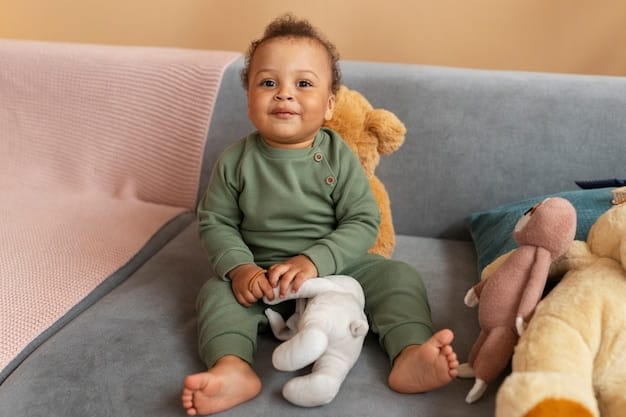
Rompers have become quite popular recently as they are easy one-piece outfits for toddlers, babies, and young children. They come in various designs, including those with buttons, zippers, and even butt flaps for convenience. However, there is some concern about whether they provide enough protection against cold and heat.
So, are rompers good for babies? Yes, rompers can be great for babies, offering comfort to both the child and the parent. However, they are best suited for babies who are at least 6 months old and can sit up on their own. Rompers may not be ideal for younger infants, and we will explain why later. Despite this, one of the big benefits is that babies can move around easily in rompers.
If you want to buy a romper for your baby, there’s more you should know. Let’s dive into the details of how rompers can benefit both you and your baby.
Can Newborns Wear Rompers?
Yes, newborns can wear rompers. These one-piece garments are designed for comfort and convenience, making diaper changes easier thanks to snap closures. They are usually made from soft fabrics like cotton, which are gentle on newborns’ delicate skin. Just make sure you choose rompers designed specifically for newborns to ensure a good fit and safety.
The Pros of Rompers for Babies
1. Easy to Put On and Take Off: Rompers are very user-friendly with snap closures and sometimes buttons or zips, making dressing and diaper changes quick and easy. This is especially handy for busy parents.
2. Warmth in Cool Weather: Many rompers are made from thicker materials like fleece or knitted cotton, keeping babies warm and cozy during cooler months.
3. Convenient Diaper Cover: Rompers can also serve as a diaper cover, eliminating the need for separate pants or leggings and thus saving money on baby clothes.
4. Stylish Choices: Rompers come in various colors, patterns, and styles, making it easy for parents to dress their babies in fashionable, cute outfits.
The Cons of Rompers for Babies
1. May Restrict Movement: Being one-piece, rompers might restrict movement more than separate pants and shirts, which can be a concern for babies learning to crawl or walk.
2. Not Ideal for Hot Weather: In very hot conditions, rompers can cause your baby to overheat, leading to discomfort and possibly heat rash.
3. Can Make Diaper Changes Tricky: While convenient in many ways, some rompers can make diaper changes more complicated compared to other types of baby clothes.
4. More Expensive: Rompers can sometimes cost more than buying separate tops and bottoms, especially if they are designer or high-end.
Alternatives to Rompers for Babies
Onesies: These are also one-piece but are usually paired with separate pants or leggings. They’re practical with snap closures for easy diaper changes.
Footed Pajamas: These cover the whole body, including the feet, and are made from warm materials, making them perfect for colder months.
Bubble Suits: Like rompers but puffier, these often come with hoods and are good for extra warmth.
Sleep Sacks: These are great for keeping babies warm while they sleep without the risks associated with blankets.
Can Babies Wear Rompers in Summer?
Rompers can be ideal for summer due to their lightweight and breathable design. They allow for better air circulation, keeping babies cool and comfortable during warm weather.
Rompers vs. Onesies
Style: Rompers are generally more stylish with more design options.
Comfort: Rompers can be more comfortable in warm weather as they don’t require additional layers.
Versatility: Rompers offer more options in terms of style and can be dressed up or down easily.
Cost: Rompers tend to be pricier due to the quality of materials and detailing involved.
Conclusion
So, are rompers good for babies? Absolutely. They are particularly suitable for babies aged 6 months and above. For younger babies, rompers could pose a risk of suffocation, so exercise caution. If you decide to buy rompers, go for the best quality and ensure they fit well for maximum comfort.
In conclusion, rompers are a cute, convenient, and versatile clothing option for your baby as long as you choose the right size and keep an eye on the weather conditions.